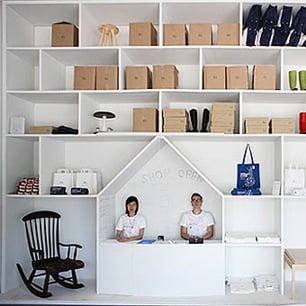
Top Secrets of Finland by Company
Finnish design duo Company present an exhibition called Top Secrets of Finland at the Kiasma contemporary art museum in Helsinki.
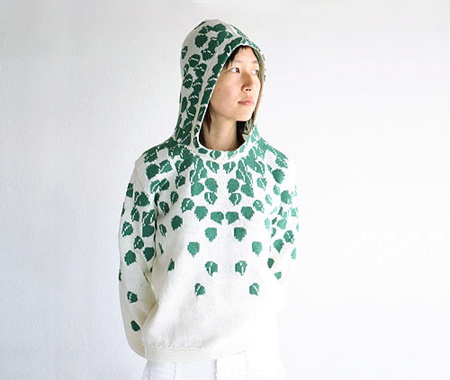
The show consists of a shop selling products that designers Aamu Song and Johan Olin developed in conjunction with manufacturers of traditional furniture, clothing and household goods across Finland.
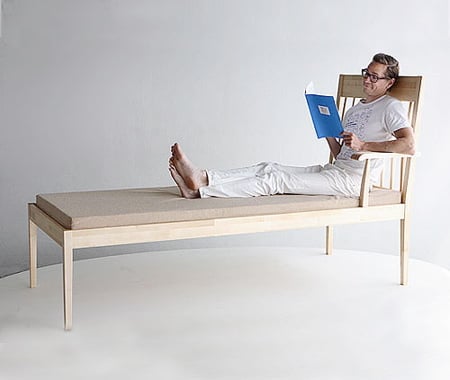
"Company explored Finland finding still existing good manufacturers and co-operated with them, and manufactured a series of products," Company tell us. "Inspiration of each product is from the manufacturer, the area, and the spirit of the product they have been producing usually for a couple of generations. The exhibition is a shop where all the products are for sale."
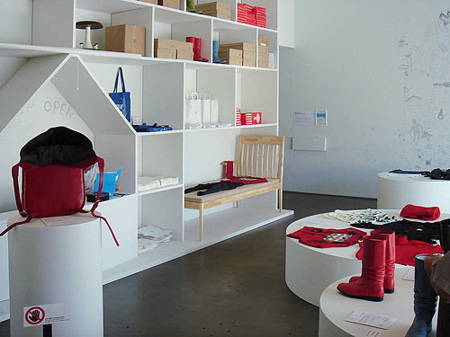
The exhibition runs until 29 September.
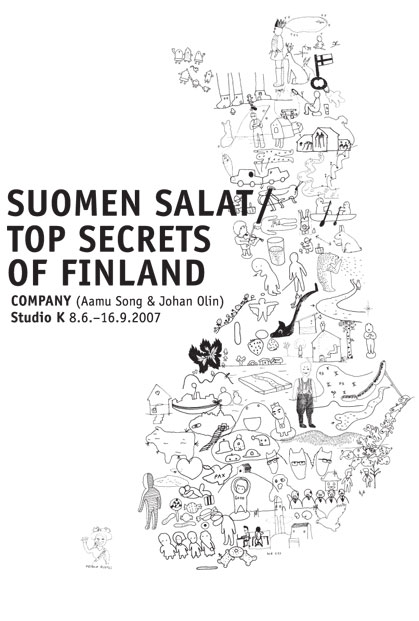
Below is an interview with Aamu Song and Johan Olin of Company taken from the Kiasma website and written by Taru Tappola:
--
Looking for the top secrets of Finland in the Company of Aamu Song and Johan Olin
It started from tango and sausage
Johan Olin: We first met at Kipsari, the student-run café at Taik. At the beginning we took part in some competitions and noticed that it’s fun to work together and we wanted also to work with other great people. That’s why we took the name Company for our two-person design team. We have worked together about seven years now.
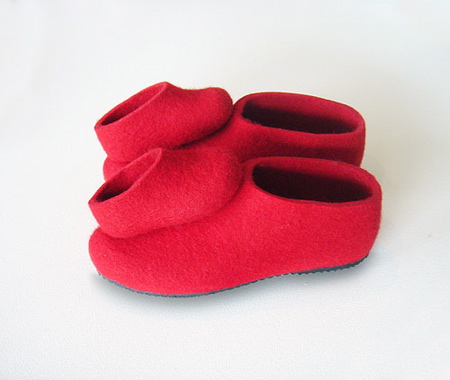
Aamu Song: When I first came to Finland from South Korea to study in Taik in 1998 I was introduced to the music of Olavi Virta. Juuso asked me if I wanted to learn Finnish tango and I said “Why not!", and so we went to Åke Blomqvist’s very tough and effective dancing school. Our first shared project was initiated at our friend’s summer cottage where Juuso said: “Why don’t we cook sausage inside a hollowed log; it could be sold as a Finnish souvenir!" I thought it was an inspirational idea and drew it down.
When I later was working with a competition “Office on the Move", making new tools for busy working people who have to carry their food with them, I remembered Juuso’s brilliant idea and asked if he would like to work with me for this competition (which we then won). That encouraged us to become a team.
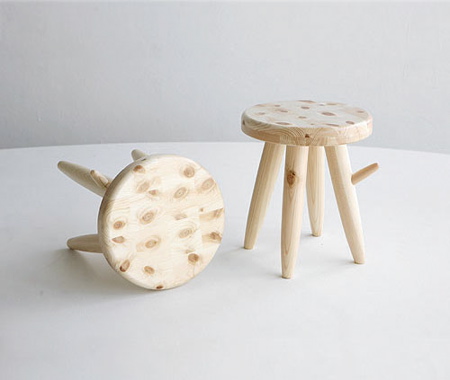
JO: In a way we both found a fresh start in co-operation. My background is in graphic design. At that time I was not familiar with product design and was very impressed by Aamu’s doings. And maybe for Aamu everything Finnish was fresh.
AS: The aura of Scandinavian Design made me come to Finland in the first place. Now I live here, so design has really changed my life. Vuokko Nurmesniemi’s “Iloinen mekko" ("Happy dress") is my favourite. I like that I can afford it and wear it and see it worn by others, like some old ladies in Kallio.
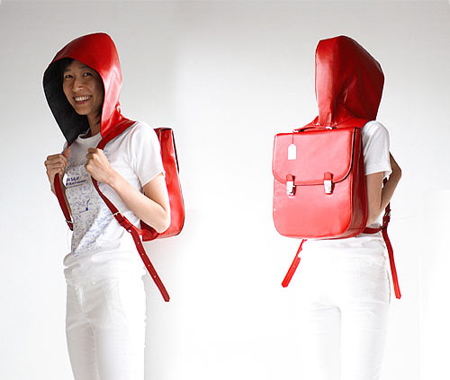
Add water to fire and make steam
AS: With us, the other sees the other’s brilliant ideas better. From the beginning we have supported and inspired each other. When I see Juuso working, I want to work too. To hear Juuso say: “This is great", is all I need to forget my doubts.
JO: We really play ping-pong with each other’s ideas and get excited about them. Our work is intertwined, there is no clear division of labour even though we usually solve the practical solutions individually. We share the same kind of world and values, but as individuals and by our working methods we are quite different. Aamu is the boiling and I am the cooling.
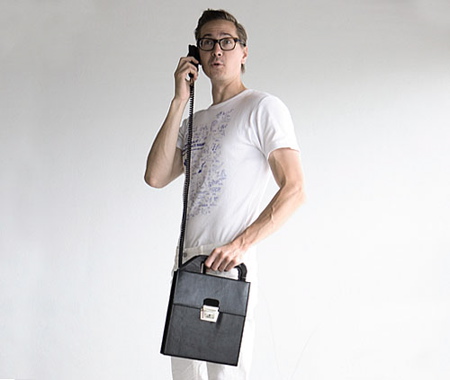
AS: Juuso is like water and I am like fire, so together we can make coffee.
For use, for everybody
JS: We are very traditional designers in the sense that we really want to make things for use, not just to be admired or looked at. It is important for us that objects really suggest a use, that they make the users’ lives better, happier, funnier, more enjoyable…
AS: I can’t hold all my ideas in my own head, it will explode unless I take the ideas and realise them into prototypes, drawings or products. I would like to design things that have not yet been done; to bring out new ideas, to make the world bigger with them.
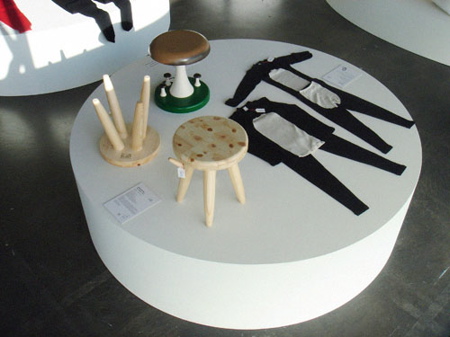
JO: I want to design meaningful things. Or things that make sense to me – especially if I can participate in the designing of the meaning itself.
AS: My idea of beauty – the thing I see as the aim of my work – is to have my products displayed tidily on a shop shelf: multiple, usable, wearable, buyable products for affordable price in shops like K-Rauta, S-Market, Alepa, prize tags and all. Design is the tool that makes this multiplicity possible. Even though my ideas are not always immediately selling and may be too weird, too new…
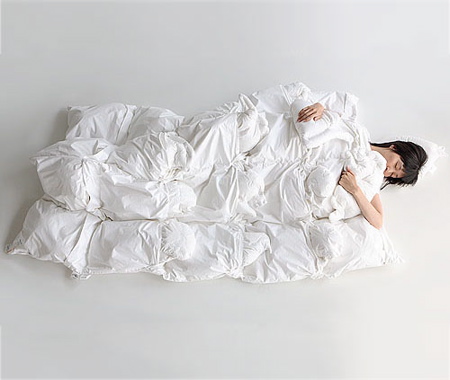
JO: All our designs are meant to be multiplied. If there is only one example of something it is because it is still a prototype. So far you cannot buy our designs anywhere, but soon… we are little by little preparing a mass production.
Cure for loneliness
AS: I could tolerate hunger or pain but I really couldn’t tolerate loneliness, I need a mental Takkiainen (an overcoat that sticks to other similar ones by velcro tape, designed by Company). As a teenager my dream was to become a chair designer…Chair was my symbol. I now know it’s something near you or in you, around the body. On the other hand I need some empty environment, to test my work at Ivalo or somewhere in the summer cottage with the music of Vesa-Matti Loiri. My main influence is my need to figure my way out of loneliness.
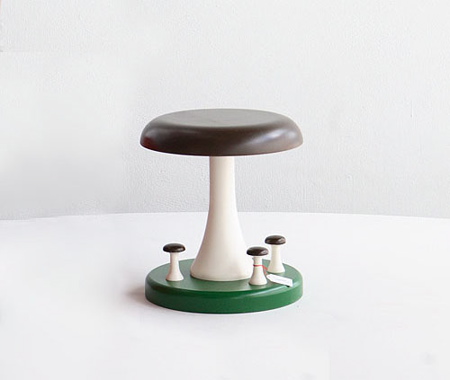
JO: Many of our projects are trying to cure loneliness. They are connecting people to each other. But for me one important thing is also to build up something by myself, to have it close to my body, to test and try things.
AS: Juuso is a typical boy: if he has an idea he has to make it, to break it, to see how it functions. He’s not afraid of any kind of challenges or practical obstacles.
JO: Maybe I also try to solve the problem during the making, not thinking beforehand (which would sometimes be good).
Design, Art or both?
AS: One of my favourite buildings in Helsinki is Tennispalatsi. It was designed for totally other purpose – tennis-playing – than it has today as a movie theatre. I enjoy it well in some other use than the original one. Similarly, we work for design, but anyone can enjoy our design as art if they like. If somebody is hungry and sees our products and somehow digests our spirit and is satisfied by them, whatever their need is, that makes us happy. I want to be the tennis court that people can use as a movie theatre. We are designers, but I think we can be connected with the field of art in the way our designs are experienced, in the empty hole people want to fill with our design, the eye and desire of the receiver.
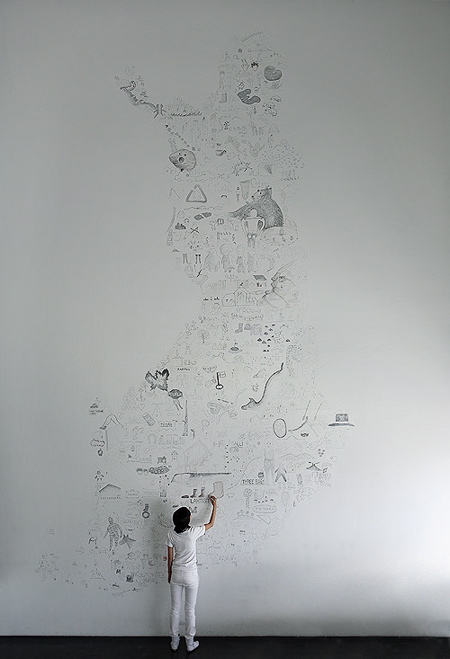
JO: Art may be involved in the reception process, in the connection between us and the users. For us it is not so different if the item is in a museum or in a shop, it’s the same experience – the only difference is that the shop is more extended experience because you can buy the item and take it with you.
AS: One of the clashes between dreams and reality is that my English is quite bad. I speak really good Korean… although I haven’t used it in a long time. My language tool is broken but still I hope everyone understands me.
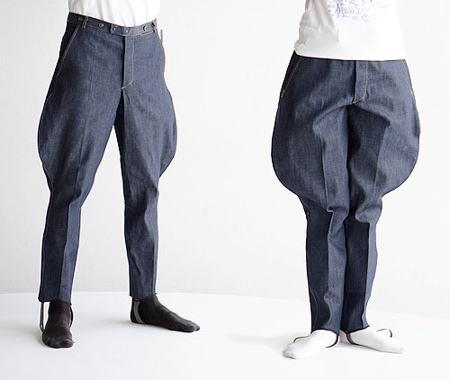
JO: Maybe that makes things more interesting also. It might create something new.
AS: I’m like Tennispalatsi in this sense: I mean “A" and you understand it as “B" and the end result becomes “C".
Bring out the child in everyone
JO: Playfulness is very important to us. Playfulness equals action. It allows for maximum amount of use: playful is usable. And if the designing process itself is fun and challenging it shows in the result. But just making fun or ironic comments is not what we do. That is a dead end.
AS: Design is often so serious and money-oriented. I respect seriousness, but there is much to explore on the other side of that. Take the example of children: they make playful things, are free in the spirit and filter the world in their own way. Why does the world stop encouraging the playfulness of children at some age? I was educated in the Korean school system which is very strict and competitive, and maybe I reacted the opposite way: I’m sometimes really childish mentally.
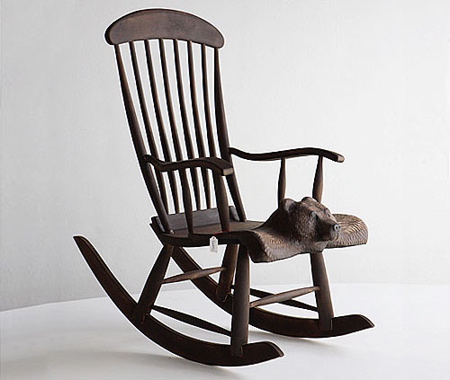
Anteeksi, mitä?
AS: Company is often confused with the Anteeksi group, perhaps because the aspect of playfulness is common to both. Even I’m sometimes confused because Anteeksi with all its happenings is so naturally intertwined in my own work. But with Company we have a clear aim. I have no idea what Anteeksi will be, but that’s what it is. One truth is that it is a good space to work near good people.
JO: Anteeksi is the working space nearly 20 people share, or nowadays it’s more like a mental space as some have moved away. Anteeksi is also the events we do together as a group. We all do our daily work on our own as individuals or smaller groups. Anteeksi is a holiday from design for everybody involved, it’s something else, there are no boundaries or clear definitions.
AS: With Anteeksi I’m not afraid of anything, there are no pressures. The main audience is Anteeksi itself. It’s a mystery, we made it just for us and it became something else, it is another Tennispalatsi…
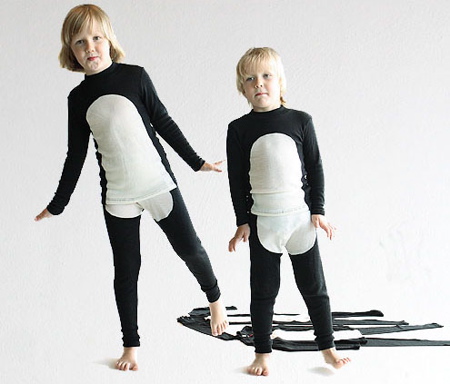
Revealing the Top Secrets of Finland
JO: The project “Top Secrets of Finland" was initiated during a trip to “mökki" (summer cottage) in the end of last year. Finnish summer cottage life is so functional and inspiring. Everything in the cottages is really well designed: the heating system, effective use of space, nature-made door handles and hangers – there is nothing extra in the interior or the daily life. We wanted to bring some of this in our everyday life. Finland has these great traditional products, and there must be great manufacturers still producing them. So we started looking.
AS: We also had the idea of collecting secrets and finding what is secret in the Finnish design field. What are the secret luxuries of Finland? Things you know but don’t tell others.
JO: We wrote to a selection of these manufacturers, and almost every one we contacted answered. Some answered even though they were just closing down or moving their production to China. Many were very pleased, open and excited and welcomed us to come and see their production lines. We usually spent one day with each company. So far we have visited 17 companies around Finland and proposed them our designs based on the spirit of their products. The process is still going on.
AS: These companies are the true reality in design. The companies we visited are all different and make very good quality.
JO: We have had great experiences meeting people in these proud and no-compromise family businesses. One common thing with all these factories was that the people running them were real characters, very charismatic people. Some of these people are so uncompromising that they are prepared to stop production if their children are not going to continue running the factory after them.
AS: It was really a total lifestyle for these people. They are similar to their products, very honest and genuine and uncompromising in their vision. One of them said, “I could triple my production but I prefer to have time to play my guitar instead". The managing directors of these family companies played in the factories as children and now their children are playing in them. To me it seemed such a beautiful way of making a living and living your life – to have your own machines and produce your designs… I feel a temptation to do that myself, when some of the companies are looking for a buyer…
JO: Earlier we have been working with individual specialized handworkers but only in very few cases with manufacturing companies. This is the first time that we have the possibility of production on a bigger scale for our designs, and what’s more – this is not a commission, but a true co-operation.
AS: This is a pilot project for us and definitely the direction we are going to develop in the future.
- Taru Tappola